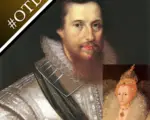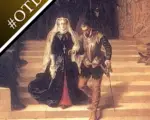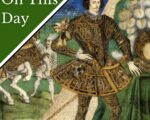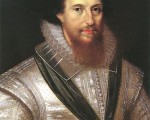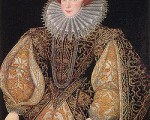Robert Devereux, 2nd Earl of Essex, was born on this day in history, 10th November 1565, at Netherwood, Herefordshire. Devereux was the eldest son of Walter Devereux, 1st Earl of Essex, and Lettice Knollys, granddaughter of Mary Boleyn, and was a favourite of Elizabeth I. After his father’s death in 1576, William Cecil, Lord Burghley, was made his guardian, and in 1578 his mother married his godfather, Robert Dudley, Earl of Leicester.
Essex first caught the Queen’s attention in 1584 when his stepfather, Leicester, brought him to court, and he was appointed Master of the Horse on his return to court after successful military service in the Netherlands with his stepfather. He was just twenty-one, and the Queen was fifty-three.
[Read More...]
